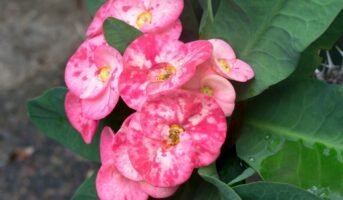Although thorny plants may not seem like the most desirable group, they actually include many popular garden and houseplant choices. There are a lot of decorative plants that have severe thorns or spiky foliage. If you plant them in the right spot, you may provide additional protection to your property without resorting to barbed wire and exorbitant fencing.
If you want to add some flair to your garden or protect it from potential intruders, you’ll want to read this article about thorny plants.
See also: All about cape gooseberry
What are thorny plants?
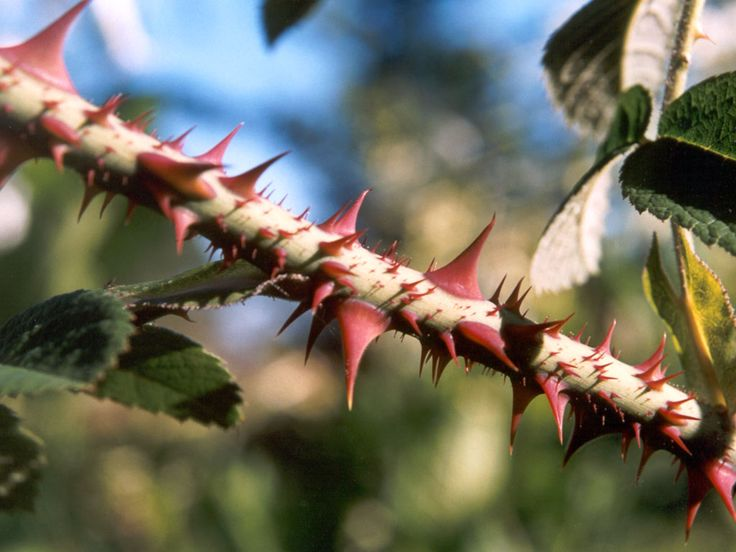
Source: Pinterest
See about: indoor plants
When it comes to privacy, thorny plants, also known as prickly bushes or spiky plants, are hard to beat. Many thorny plants feature long, sharp spines, making them visually pleasing and functional deterrents. Typically flowering, deciduous perennial thorn plants have a high level of aesthetic value as landscape plants. Furthermore, evergreen thorny plants make a great protective barrier and enclosure all year round.
Known about: How to create and maintain herb gardens?
Where to grow thorny plants?
It’s important to consider the placement of thorny plants and bushes before planting them. Keep some distance around your lawn if you have spiky plants because you don’t want any kids or dogs being hurt on those vicious, pointy shrub spines. The following are some places where thorny plants could be grown to use their defensive qualities:
- You may keep intruders out of your home by planting thorny plants and bushes near the foundation and below the windows.
- Growing a line of tall, thorny plants and blooming shrubs next to a fence or wall can prevent invaders.
- Instead of erecting a fence, planting thorny plants in key areas can keep out nuisance animals, including stray dogs.
See Also: Nightshade: Facts about poisonous plants of the nightshade family
Types of thorny plants
Let’s take a more in-depth look at the various thorny plants that can be grown as safety or defensive plants.
Thorny Bougainvillea Bushes and Vines
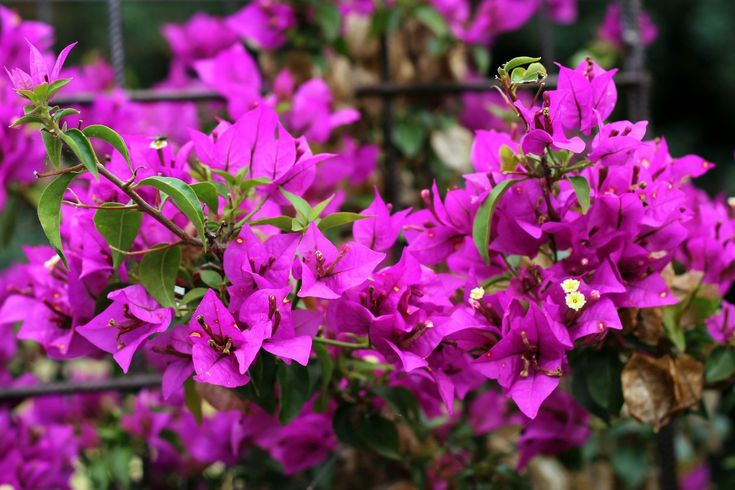
Source: Pinterest
The Bougainvillea is a magnificent species of flowering plant with broad sweeping thorny branches that bloom year round. With its sharp thorns, a bougainvillaea vine is a great deterrent against wall or fence climbing. The thorny stems can adhere to buildings or other plants, and the vine can spread up to 24 feet (12 metres) in length.
Crown of thorn plants

Source: Pinterest
Flowering and prickly, the Crown of Thorn Plant is a shrub of average size. The round, crimson or pink bract blooms and bright green foliage of this thorny shrub are distinctive. The thick-stemmed shrub is used for security because its sharp spines can grow up to 2.5 cm in length.
Thorny Firethorn Shrub

Source: Pinterest
Firethorn shrubs are tall, thorny evergreen hedge plants with short, oblong evergreens, bunches of white blooms, and orange, red, or yellow berries. The dense prickly texture of the thorny shrub makes it useful for lining borders, serving as a protective barrier, or standing alone as a decorative plant. Shrubs of the firethorn species can attain heights of 6 to 16 feet (1.8 to 5 m).
Thorny Rose Shrub

Source: Pinterest
Rose bushes with thorns are stunning floral shrubs, but their sharp thorns on sturdy woody canes can be dangerous. Rose bushes, often known as “shrub roses,” are thorny, sprawling plants that may flourish in various soil conditions. The pink flowers of a rose bush are followed by big orange rose hips. Thick, thorny rose bushes can reach a height of 4 feet (1.2 metres) and a width of 6 feet (1.8 metres).
Agarita
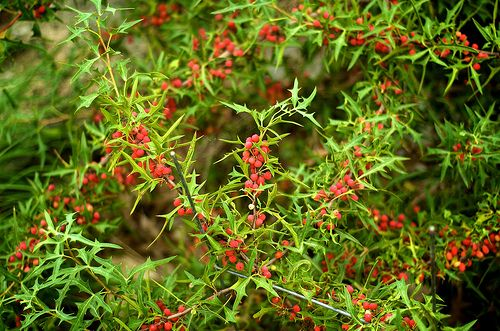
Source: Pinterest
The agarita bush is a perennial plant with bright red berries and prickly, holly-like leaves. Despite their thorny reputation, agarita shrubs are quite attractive thanks to their rounded, spreading form, grey-green leaves, little yellow cup-shaped blooms, and red berries. In their natural habitats, shrubs of the agarita species can attain a height and width of up to 6 feet (0.6 m and 1.8 m).
Japanese Barberry
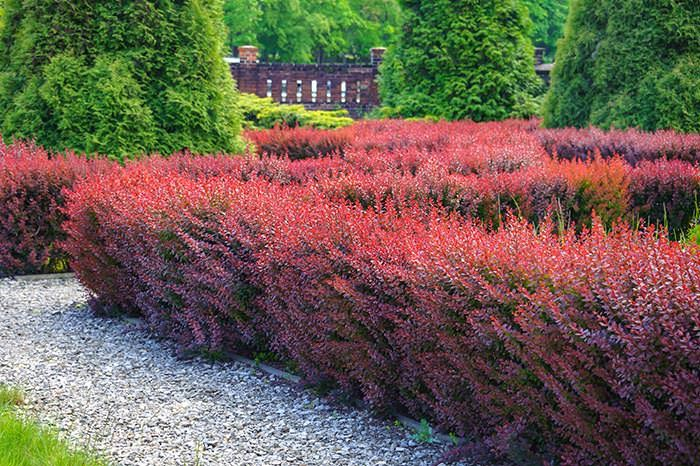
Source: Pinterest
The Japanese barberry is an aggressive hedge shrub with small oblong leaves, yellow blooms, microscopic prickly spines, and bright red berries. This thorny plant, also known as red barberry or Thunberg’s barberry, contains spines that develop at the joints of the leaves. The barberry can reach heights of 1–3 feet (0.3–1.8 metres) and widths of up to 2.1–7 metres.
Chinese Quince
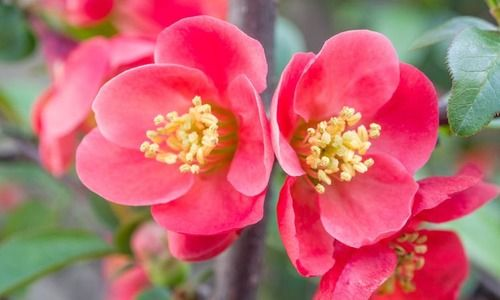
Source: Pinterest
In addition to its thorny, woody twigs, pinkish-white or red blooms, and apple-like berries, the Chinese quince is an evergreen, multi-stemmed thorny plant. Early spring is when quince plants blossom with bare, thorny stems. In the fall, the enormous spines on the branches become visible through the oblong, deciduous leaves that have turned a deep crimson colour.
Sea Buckthorn

Source: Pinterest
Sea buckthorn is a deciduous, thorny shrub that can survive in cold climates. It has narrow, silvery-green leaves and vivid yellow berries. A sea buckthorn plant’s maximum height and width are about 12 feet (2.4 m). The orange-yellow berries that cover the multi-stemmed shrub last into winter, increasing the shrub’s aesthetic value.
Common Hawthorn Spiky Shrub
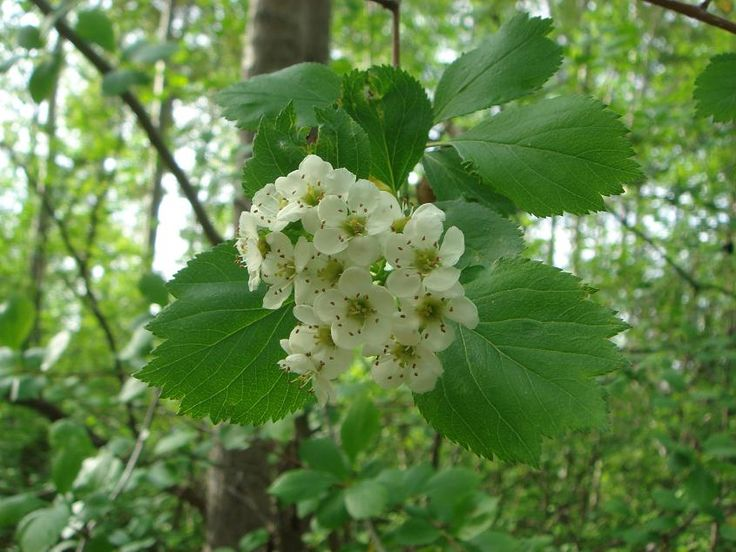
Source: Pinterest
Flowering and thorny, the typical hawthorn is a small tree or a shrub. Hawthorn’s thick growth, sharp 2.5 cm thorns, and little maintenance make it a great choice for a protective hedge. The height of a hawthorn bush can range from 15 feet to 45 feet (5 to 14 metres).
Spiky Blackberry Shrub
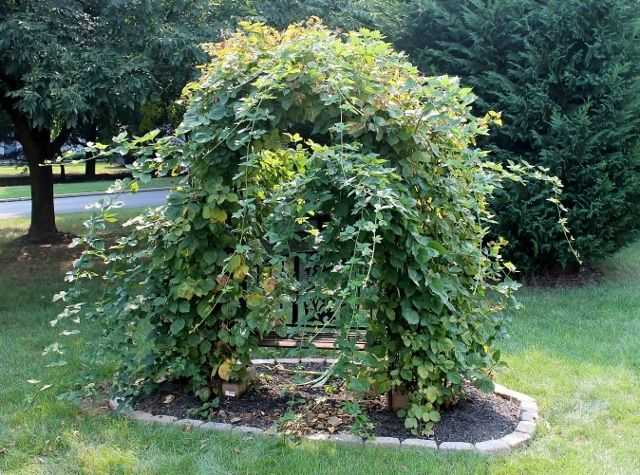
Source: Pinterest
Blackberry bushes are sturdy defence plants that produce a bumper crop of blackberries on tall, arched, prickly stems. Scraggly blackberry bushes can have everlasting or deciduous leaves, depending on the season and your location. In the spring, you can see flowers with five petals, which will eventually turn into fruit that you can eat.
Common Holly
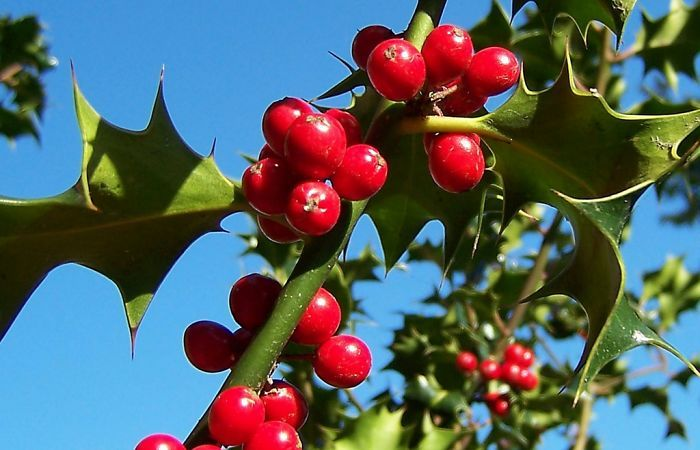
Source: Pinterest
Holly is an evergreen hedge shrub characterised by pointed, spiny leaves and bright red berries. Holly shrubs have spiky leaves, their primary protective mechanism because they prevent animals from navigating through the undergrowth. Holly bushes can normally reach heights of 2.1 to 3 metres and widths of 7 to 10 feet.
Spiked Blackthorn
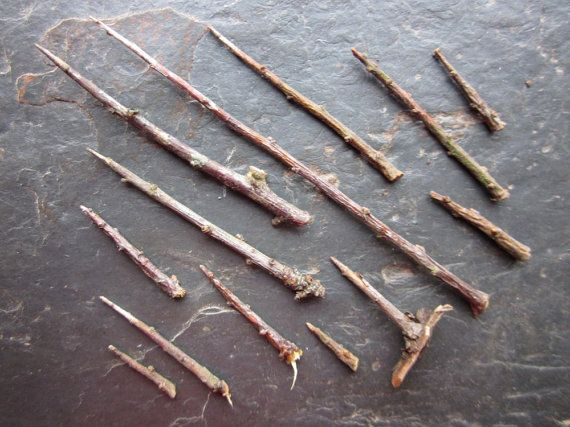
Source: Pinterest
Blackthorn is a big deciduous shrub armed to the teeth with a profusion of sharp prickles distributed across its rigid branches. Sloes are the name given to the bluish-black drupes that can be found on the thorny plant. The thorny branches of the blackthorn plant are perfect for use as a garden barrier because they are low maintenance and prickly. The bushy shrub can reach a height of up to 5 metres and a width of up to 16 feet.
Porcupine Tomato or Devil’s Thorn

Source: Pinterest
The porcupine tomato shrub, also known as the Devil’s thorn, is characterised by evergreen leaves surrounded by orange thorns that serve as a form of defence. The fuzzy grey, petalled leaves and upright, brilliant orange spikes of this thorny plant are one of the plant’s most appealing characteristics. In the spring, the protective plant bursts into blossoms with blooms of a lavender hue, adding to the ornamental charm of the plant.
Oregon Grape

Source: Pinterest
Bib bushes are armed with sharp, thorny leaves resembling holly leaves as a defence mechanism. This evergreen shrub, which can go by a few different names, is between 1 and 1.8 metres in height and can get as wide as it is tall.
Fuchsia-Flowered Gooseberry
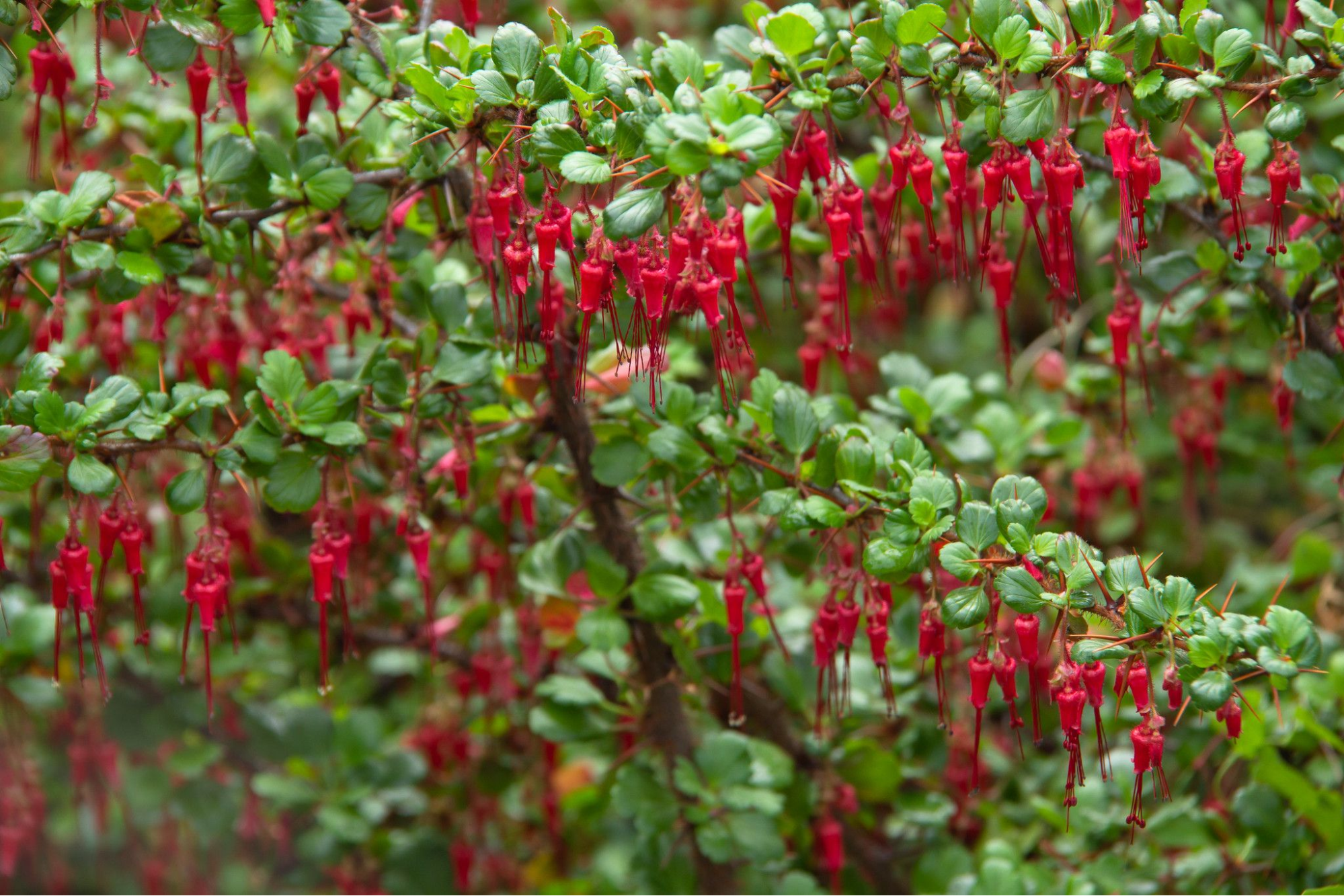
Source: Pinterest
Flowering and deciduous, the fuchsia-flowered gooseberry has three venomous-looking spines at each node along its stem. No living creature, human or otherwise, should ever attempt to traverse this bush because of its long, sharp, rigid spines. The prickly fuchsia bush also has long, crimson stamens and fuzzy red berries on its hanging red tubular flowers.
Barrel Cactus
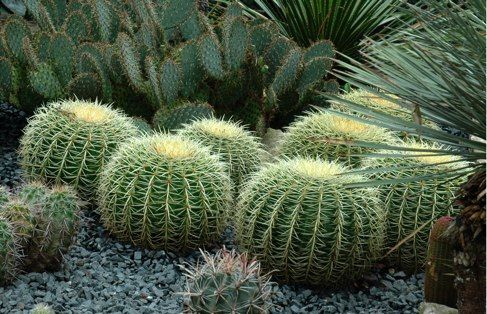
Source: Pinterest
Barrel cacti are not bushes or vines but rather large, prickly desert plants that can be planted for protection. A barrel cactus is a domed plant with firm, yellow spines. If the land becomes too parched or the environment is too hot to grow thorn plants for protection, a series of barrel cacti can be an effective security alternative along boundaries.
Thorny plants: Benefits
There are plenty of benefits of growing thorny plants at home.
- Natural Security: Thorny plants act as a natural deterrent against trespassers and intruders, providing an added layer of security to your home and garden.
- Wildlife Habitat: The thorns and dense foliage of these plants create a safe haven for birds and small animals, encouraging biodiversity and supporting local ecosystems.
- Aesthetics and Texture: Thorny plants add unique texture and visual interest to your landscape, creating a striking contrast to softer, non-thorny plants.
- Privacy and Screening: Dense, thorny shrubs can be used to create natural privacy screens, shielding your home from prying eyes and noise pollution.
- Low Maintenance: Many thorny plants are hardy and require minimal care, making them suitable for busy homeowners or those with limited gardening experience.
- Soil Erosion Control: The strong root systems of thorny plants help stabilise soil, preventing erosion in areas prone to heavy rainfall or wind.
- Medicinal and Culinary Uses: Some thorny plants, like Hawthorn and Rose bushes, have medicinal and culinary properties, adding value beyond their ornamental appeal.
- Drought Tolerance: Several thorny plants have adapted to arid conditions, making them resilient choices for water-wise gardening and drought-prone regions.
- Easy Propagation: Many thorny plants can be propagated through cuttings, allowing you to expand your garden and share these plants with others easily.
Tips to grow thorny plants
The cultivation of thorny and prickly plants in a garden calls for special attention. Oftentimes, the spines on thorny plants are long and rigid, not to mention sharp and vicious looking. Moreover, the thorns of some defensive plants contain irritants. Because of this, you should wear protective clothing and gloves when working with a thorn bush.
Wear puncture-resistant gloves when trimming, transplanting, or dealing with a thorny plant. Also, if you’re cutting back thorny branches, safety glasses are a must. Further, shoes or boots with thick bottoms help shield the wearer from sharp spines.
FAQs
Where do you find thorny plants?
Thorny plants prefer hot, dry, subtropical climates with less than 500 millimetres of annual precipitation. Due to the lack of precipitation, these regions are typically deserts. Seasonally, the plants drop their leaves to conserve water.
Why are there thorns on plants?
Most plants with thorns need them for defence against herbivores, but it has been proven that in other plant families, like cacti, spines evolved primarily as a method to limit water loss from leaves.
What happens if thorns are touched?
Organic thorns and splinters, such as those found in wood, roses, and other plants, can cause serious discomfort and infection if left in the body. While you might be able to ignore a metal or glass splinter, a cactus spine should be removed as possible to avoid injury.
Housing News Desk is the news desk of leading online real estate portal, Housing.com. Housing News Desk focuses on a variety of topics such as real estate laws, taxes, current news, property trends, home loans, rentals, décor, green homes, home improvement, etc. The main objective of the news desk, is to cover the real estate sector from the perspective of providing information that is useful to the end-user.
Facebook: https://www.facebook.com/housing.com/
Twitter: https://twitter.com/Housing
Email: [email protected]

